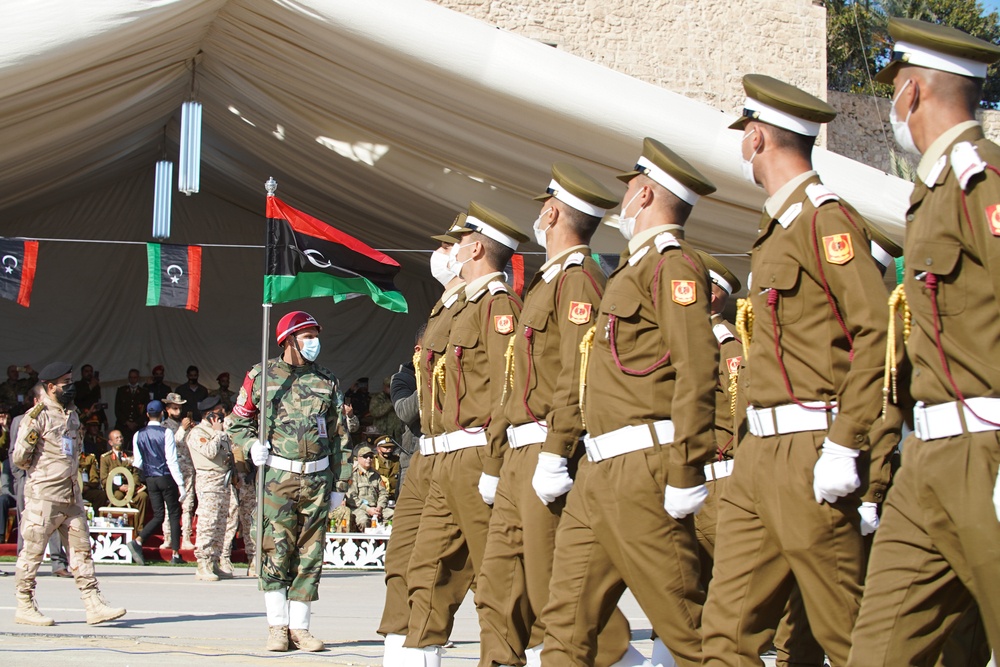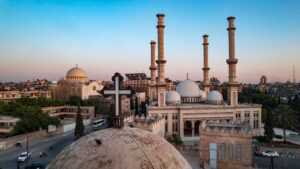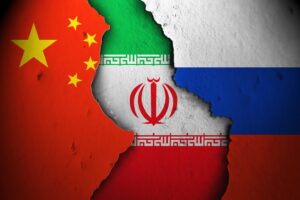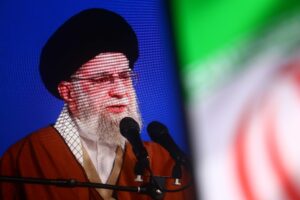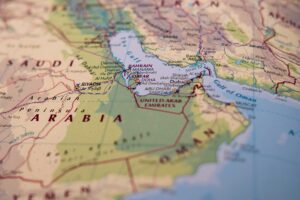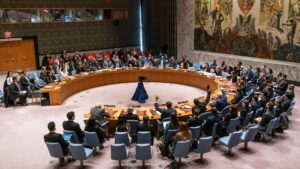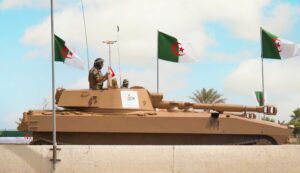Introduction
Ten years ago, protests in Libya against Muammar Gaddafi’s government tipped into an armed uprising which resulted, with the help of a NATO-led intervention, in the collapse of his 42-year old regime. The decade since has been marked by political, security, and economic volatility. Ongoing violence, including periodic escalations in conflict, along with political stalemate, has produced a governance vacuum which has led to significant security, rule of law, and social and economic challenges. The most recent escalation occurred in April 2019 when Khalifa Haftar, a commander based in eastern Libya, launched an offensive to capture the capital, Tripoli, from the internationally-recognised government. Haftar’s assault, which took place just days before a UN-sponsored national conference was due to take place, not only upended the UN process but also led to more than a year of war, drawing in foreign support for both sides in violation of an arms embargo imposed in 2011.
In October 2020, negotiators from the warring camps signed a ceasefire. In February this year, the UN-facilitated Libyan Political Dialogue Forum (LPDF) resulted in an agreement to form an interim unity government to replace rival authorities.[i] The new government – comprising a three-person Presidency Council that will work alongside Prime Minister Abdulhamid Dabaiba and his cabinet – has a limited lifespan and mandate. Its main task is to steer the country towards national elections on December 24. Diplomats hope this ballot will help address the legitimacy crisis that has afflicted Libya’s institutions since the last parliamentary elections were held in 2014.[ii]
The coming period may represent a rare window of opportunity to get Libya’s transition back on track. While cautious optimism is welcomed, the scale of the challenges ahead, both in the medium and long term, should not be underestimated.
Challenges
Security
After the collapse of Gaddafi’s regime in 2011, not only was the Libyan military incapable of imposing a monopoly of force, the transitional authorities also had to contend with numerous armed groups that had emerged.
Col. Gaddafi, who came to power in a military coup in 1969, feared opponents would attempt the same against him, which drove him to hollow out the Libyan army over four decades and instead build up battalions headed by his sons and other loyalists. After the collapse of Gaddafi’s regime in 2011, not only was the Libyan military he left behind incapable of imposing a monopoly of force, the transitional authorities also had to contend with numerous armed groups that had emerged during the uprising or opportunistically formed in its aftermath. The latter dynamic was accelerated following a decision to award state salaries to anyone who claimed to have fought against the regime in 2011.[iii] This was part of early misjudged efforts to integrate such fighters into the state apparatus.
Attempts to implement security sector reform as well as disarmament, demobilisation and reintegration (DDR) since 2011 have been piecemeal and largely unsuccessful. Insecurity in Libya has in turn affected the economy – energy infrastructure has been repeatedly targeted – and has also allowed designated groups including Islamic State and al-Qaeda in the Islamic Maghreb (AQIM) to exploit the resulting vacuum. Furthermore, it has encouraged the growth of criminal networks, including those involved in human trafficking and the smuggling of drugs and other illicit goods, and kidnapping for ransom.
Since 2014, rival forces have claimed to be the national army. Contrary to Khalifa Haftar’s claims, the forces he calls the Libyan Arab Armed Forces (LAAF) are in fact a mix of former Gaddafi-era security personnel and more recent recruits, along with tribal militiamen, hardline Salafists and foreign mercenaries (Russians from the Wagner group along with Chadian, Sudanese, and Syrian fighters).[iv] On the other side, the forces aligned with the Government of National Accord (GNA) in Tripoli since its inception in late 2015 include military officers along with various militias with different identities, from highly localised – particularly those from Misrata, Libya’s third largest city – to Salafist. These have been augmented with Syrian mercenaries sent by Turkey to counter Haftar’s 2019 Tripoli offensive.[v] Both sides have various ground, air and naval units with Haftar having been backed by the United Arab Emirates, Egypt, Russia and France while his opponents have been supported by Turkey and Qatar.
A joint military commission created last year to participate in the security track of the UN process includes representatives from both the GNA and Haftar’s camp. Solving Libya’s security challenge means more than just unifying existing forces. Establishing a professional and truly national security force under civilian authority will mean rooting out problematic elements in both camps. For example, a commander in Haftar’s forces is subject to two arrest warrants from the International Criminal Court in relation to alleged war crimes, including mass executions.
Tackling insecurity is Libya’s most pressing challenge, after which all else – from better governance to economic reform – follows.
Economic
The Libyan economy has been characterised by low productivity and a lack of diversification.
Oil is the backbone of the Libyan economy, a legacy of the rentier state Gaddafi created. Under his rule, the country’s oil wealth was distributed mainly through a bloated public sector – today most of the workforce remains employed by the state – and subsidised basic goods including fuel and foodstuffs. As a result, the Libyan economy has been characterised by low productivity and a lack of diversification. Revenues collected by the National Oil Corporation (NOC) – a state institution that has managed to withstand the power struggles of the past decade due to nimble leadership and international support – are transferred to the Central Bank (CBL), which manages public expenditure. A civil conflict that started in 2014 split the CBL as well as other institutions. Since then security and political instability, disruptions in oil production, and decline in global oil prices have pummelled the economy. A steep decline in the value of the Libyan dinar has encouraged the growth of a shadow economy and contributed to inflation.[vi]
Grievances related to regional marginalisation have fuelled criticism of the CBL, as has a lack of transparency regarding the allocation of public funds. Recent efforts to unify the CBL as part of a wider economic reform track within the UN process have started to bear tentative fruit.
Haftar’s attack on Tripoli in early 2019 and the blockading of major oil facilities by his allies a year later together caused the most serious political, economic, and humanitarian crises since 2011, according to the World Bank.[vii] The Covid-19 pandemic has further threatened Libya’s economy, with more than 143,000 cases and 2,348 deaths confirmed by mid March 2021.[viii] With testing across the country remaining patchy, these figures are considered underestimates.
Given that efforts towards economic diversification remain patchy and the private sector continues to be underdeveloped, Libya’s energy sector is critical to the country’s recovery. It holds both the potential for stabilisation – if longstanding discontent over the distribution of oil revenues is addressed – and the risk of exacerbating power struggles. The sabotaging of energy infrastructure, most recently by Haftar’s loyalists, has been a common tactic by armed groups since 2011.
Most of Libya’s sovereign wealth fund, overseen by the Libyan Investment Authority (LIA), has been frozen under UN sanctions since Gaddafi’s fall. Its assets were valued at $67 billion in 2012.The Libyan authorities asked the UN Security Council to approve a sanctions exemption for the LIA in 2016, but this request was turned down because the UN wanted to see a stable government in place before doing so.
In the longer term, however, Libya needs to begin planning for a future beyond oil, given how the global conversation on fossil fuels is evolving.
Political and Social
Libyans have voted in three national elections since the fall of Gaddafi with parliamentary elections having taken place in 2012 and 2014. A ballot to elect a commission tasked with drafting the country’s first post-Gaddafi constitution was also held in 2014. Each election has been marked by lower turnout than the last, with only 630,000 voting in the 2014 parliamentary elections compared to 1.76 million two years before.[ix] This not only undermined the legitimacy of the resulting parliament – a key element of the power struggles that followed – but it also raised the question of whether Libyans had already tired of their experiment with their democratic politics. Security concerns and boycotts by constituencies like the non-Arab Amazigh minority over representation had also affected turnout.
Haftar has since declared the country is not ready for democracy and many of his supporters make no secret of their wish for a return to authoritarian rule, sentiment that is partly rooted in nostalgia for the Gaddafi era. Should elections take place in December 2021 as planned, it will be a real test of Libya’s fledgling democracy. In the absence of a unified national government since 2014, local governance in the form of municipal councils has expanded in many parts of the country, with the councils not only providing services but also nurturing a sense of stakeholder-ship at community level.[x]
Civil society was limited under Gaddafi but it flourished in the aftermath of the 2011 uprising. Ten years on, Libya’s civil society sphere has shrunk for a number of reasons.
Civil society was limited under Gaddafi but it flourished in the aftermath of the 2011 uprising. Ten years on, Libya’s civil society sphere has shrunk for a number of reasons including the targeting of activists by armed groups. A number of prominent figures, including women such as Benghazi lawyers Salwa Bugaighis and Hanan al-Barassi, have been assassinated. Nevertheless, activists – particularly youth and women – persevere. Campaigning by women activists pressured the new prime minister Abdulhamid Dabaiba to include five women in his government, resulting in Najla El Mangoush and Halima Abdulrahman being appointed as foreign and justice minister, respectively.[xi]
Although a ceasefire has held since October 2020, the humanitarian situation in Libya remains dire. It is estimated that 1.3 million people will need humanitarian assistance in 2021, a 40 percent increase compared to 2020.[xii] They include internally displaced persons, refugees, and migrants. The country’s health system, which is on the verge of collapse, has seen more than half of all facilities close since 2019. It lacks the resources, personnel and equipment to deal effectively with the Covid-19 pandemic.[xiii]
More than 200,000 Libyans remain displaced across the country. For the general population, living conditions, including access to clean drinking water and safe housing, have all deteriorated since 2011. Widespread power outages are a daily occurrence. Concerns over the condition of the Great Man-Made River System – a massive Gaddafi-era project that pipes the majority of the country’s potable water from desert aquifers to most of the Libyan population – have grown in recent years. UN agencies have warned that the system is close to collapse due to poor maintenance and repeated sabotage by a range of armed groups seeking leverage with the central government.[xiv]
Libyan youth
Some two-thirds of Libya’s population is under the age of 30, reflecting demographic trends in the wider region. Libyan youth helped drive the uprising against Gaddafi in 2011 and they have been aversely affected by the chaotic decade that has followed. Unemployment is a particular problem, one that leaves young people susceptible to recruitment by armed groups and criminal networks.[xv] Libya’s universities and schools have suffered during years of conflict and many youth have had their education severely disrupted. Drug abuse among young Libyans has increased.[xvi] In recent years, a growing number have taken the smugglers’ boats to Europe, seeing few prospects at home. Addressing the multiple challenges faced by youth should be a key priority of the new government.
Conclusion
Libya is now at a critical juncture with its first unified government since 2014 taking shape as an international community, keen to see national elections held at the end of the year, looks on. Key over the next months is the question of how domestic and foreign spoilers may respond to the new authority, particularly if they perceive it to be detrimental to their interests. With a mandate of less than a year, the Government of National Unity – as it has been named – should focus on unifying splintered institutions and distributing oil revenues more equitably and transparently, in addition to preparing for the December ballot. Winning support from political and armed factions for such an agenda is crucial, as is establishing legitimacy in the eyes of the wider population. Much can be gained over the next nine months, but there is also much to lose.
[i] Patrick Wintour, “UN-sponsored talks produce interim government for Libya,” The Guardian, February 5, 2021, accessed March 15, 2021, https://www.theguardian.com/world/2021/feb/05/un-libya-talks-produce-interim-government-elections
[ii] Stephanie Turco Williams and Jeffrey Feltman, “Can a political breakthrough mend a broken Libya?” Brookings Institution, February 17, 2021, accessed March 15, 2021, https://www.brookings.edu/blog/order-from-chaos/2021/02/17/can-a-political-breakthrough-mend-a-broken-libya/
[iii] Hamzeh al-Shadeedi, Erwin van Veen and Jalel Harchaoui, “One thousand and one failings: Security sector stabilisation and development in Libya,” Clingendael Institute, April 2020, accessed March 12, 2021. https://www.clingendael.org/pub/2020/one-thousand-and-one-failings/
[iv] Reuters staff, “Russian hiring of Syrians to fight in Libya accelerated in May,” Reuters, June 7, 2020, accessed, March 12, 2021. https://www.reuters.com/article/us-libya-security-syria-russia-exclusive-idUSKBN23E06H
[v] Samy Magdy, “US: Turkey-sent Syrian fighters generate backlash in Libya, Associated Press, September 2, 2020, accessed March 11, 2021. https://apnews.com/article/middle-east-africa-679a6d6fc549bda59f8627d91d9a363c
[vi] In December 2020, for the first time in five years, the board of directors of the Central Bank of Libya agreed to devalue the dinar from LYD 1.00 = SDR 0.5175 to LYD 1.00 = SDR 0.156, effective as of January 3, 2021, with the equivalent rate to the US dollar, LYD 4.48 = US$1.00 using US$1.44 = SDR 1.00 rate. See “Libya’s Economic Update – October 2020,” World Bank, October 2020, accessed March 10, 2021. https://www.worldbank.org/en/country/libya/publication/economic-update-october-2020
[vii] World Bank, “Libya’s Economic Update – October 2020,” World Bank, October 2020, accessed March 10, 2021. https://www.worldbank.org/en/country/libya/publication/economic-update-october-2020
[viii] World Health Organisation, “Covid-19 Dashboard: Libya,” World Health Organisation, March 14 2021, accessed March 15, 2021. https://covid19.who.int/region/emro/country/ly
[ix] “ElectionGuide: Libya,” International Foundation for Electoral Systems (IFES), accessed March 15, 2021. https://www.electionguide.org/countries/id/123/
[x] Tarek Megerisi, “Order from chaos: Stabilising Libya the local way,” European Council on Foreign Relations, July 2018, accessed March 15, 2021. https://ecfr.eu/wp-content/uploads/ECFR_265_Order_from_chaos_stabilising_libya_the_local_way_T_Megerisi.pdf
[xi] Reuters staff, “Libyan women want progress after appointment of first female foreign minister,” Reuters, March 11, 2021, accessed March 13, 2021. https://www.reuters.com/article/uk-libya-government-women/libyan-women-want-progress-after-appointment-of-first-female-foreign-minister-idUSKBN2B32KE?il=0
[xii] UN OCHA,” Global Humanitarian Overview 2021: Libya,” accessed March 10, 2021. https://gho.unocha.org/libya#:~:text=Projected%20situation%20in%202021%20and,the%20impact%20of%20armed%20conflict.
[xiii] Ibid.
[xiv] Ulf Laessing and Ahmed Elumami, “In battle for Libya’s oil, water becomes a casualty,” Reuters, July 2, 2019, accessed March 19, 2021. https://www.reuters.com/article/us-libya-security-water-insight-idUSKCN1TX0KQ
[xv] The World Bank cites International Labour Organisation estimates of youth employment in Libya being 49.5 percent (of the total labour force aged 15-24) in 2019. Accessed March 12, 2021 https://data.worldbank.org/indicator/SL.UEM.1524.ZS?locations=LY
[xvi] Fiona Mangan, “Illicit Drug Trafficking and Use in Libya: Highs and Lows,” United States Institute of Peace, May 28, 2020, accessed March 9, 2021. https://www.usip.org/publications/2020/05/illicit-drug-trafficking-and-use-libya-highs-and-lows

